

Class build guides will take care of very specific stats to acquire on gear, but I feel it’s important as a Diablo 3 player to understand why we pick the stats we do. Players should be able to experiment with different builds by generally knowing how to support those builds with their gear without needing a precise gearing manual or spreadsheet at hand.
Elemental percent is what we mean by those amulets and bracers that have a stat line about “[Element] skills deal X% more damage,” with [element] being one of Diablo 3’s elemental schools of damage: Arcane, Cold, Fire, Holy, Lightning, Poison, or Physical. The abbreviations for this stat vary, from the general “ele %” to the specific “lightning %” for a particular class build. Most class skill builds are built around one main elemental school in order to take advantage of this stat. If a class build has skills in two or more different elemental schools, then the school of whatever skill is the biggest damage source is what elemental school you’ll aim for in elemental percent damage.
Skill damage is also not set in Diablo 3. Ability damage in WoW is often set by a certain percentage of spell power or attack power and then some modifiers. Skill damage in Diablo 3 can be increased by gear through stat lines like “Increases [skill] Damage by X% ([Class] Only).” Otherwise, skill damage is at its core based as dealing some multiple percentage of your weapon damage.
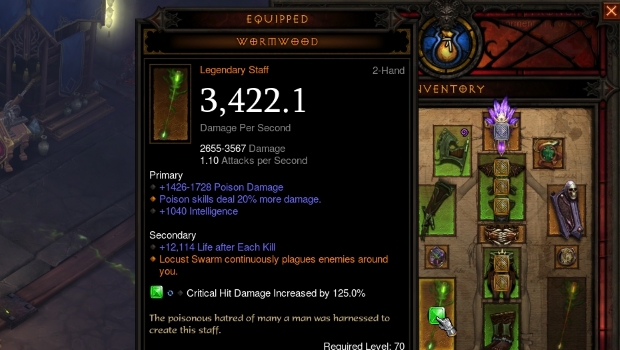
Weapon damage is a tad confusing and illustrates one problem with Diablo 3’s conflict of UI and gearing vision. One of the goals of Diablo 3 was to get away from all the spread-sheeting that comes with WoW’s theory crafting territory and to provide simple conclusions of whether an item is an upgrade or not. Unfortunately, tooltips lie. This isn’t to say that they tell untruths in Diablo 3, it’s more that they don’t tell you the whole truth about what’s being factored into a number. And in weapon damage’s case, sometimes they highlight the wrong number to look at.
The visibly big number on weapon tooltips is the weapon DPS number, and the game gets it by taking the average of the base weapon damage range listed below it and multiplying by the base attack speed listed on the weapon. Already you can see that this does not take into account the increased elemental damage that can appear on the weapon or other gear nor does it take into account increased attack speed from Paragon points or gear. What you should instead focus on with weapon damage are two things: the range of weapon damage (low and high damage) and your desired attack speed (slow or fast).
There are two very general styles of skill builds. One style values increased attack speed (IAS or AS or AttS) because it focuses on hitting things very often all the time. Pet builds tend to value increased attack speed, as it passively buffs the various pets and guardians you can have out hitting things for you. Dual-wield builds also often value attack speed since each weapon hits for less than what a slow two-hander would do.
The other general style of build is a resource-based skill build, where attack speed doesn’t matter so much because of cooldowns and abilities that don’t stack. These builds are often wielding slow two-handed weapons that hit hard when they do hit and focus on stats like cooldown reduction (CDR) and resource cost reduction (RCR). Sometimes the two stats are both priorities for the build; sometimes only one stat is desirable and the other doesn’t do much for the build. Cooldown reduction is found as a stat on items, but often the biggest chunk of CDR is found by socketing a big diamond into your helm. Resource cost reduction is only found as a stat on gear pieces rather than as a socketable addition.
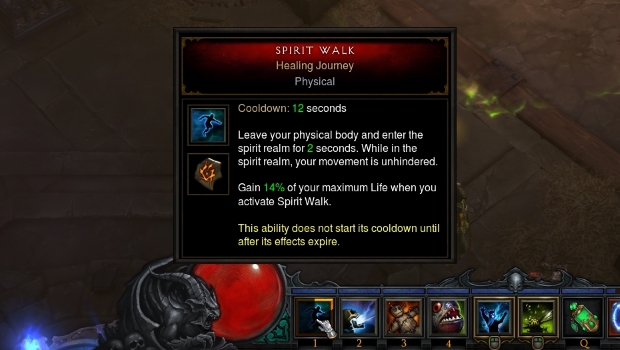 Cooldown reduction helps when your build is heavily focused on crowd control (CC) or abilities with cooldowns that buff your damage. For example, Spirit Walk is arguably the most important Witch Doctor skill, despite being a defensive cooldown rather than an offensive ability. Spirit Walk has a 12-second base cooldown, but if my Doctor could grab 25% CDR, that Spirit Walk now only has a 9.6 sec cooldown.
Cooldown reduction helps when your build is heavily focused on crowd control (CC) or abilities with cooldowns that buff your damage. For example, Spirit Walk is arguably the most important Witch Doctor skill, despite being a defensive cooldown rather than an offensive ability. Spirit Walk has a 12-second base cooldown, but if my Doctor could grab 25% CDR, that Spirit Walk now only has a 9.6 sec cooldown.
Resource cost reduction helps when your build is heavily focused on abilities that hit hard but rather than having a long cooldown, they have instead a large resource cost. A Wizard who casts Meteor as a main damage ability can spam it only so long as she has 40 Arcane Power to spend. A 25% RCR would mean she only has to spend 32 Arcane Power to cast a Meteor.
Critical hit chance (CHC) is something familiar: It’s the chance your damage is going to crit. The critical hit damage (CHD) in WoW is a fixed number — twice what the original hit was. In Diablo 3, you can control how much harder your critical strikes hit for by increasing the CHD stat on your gear. Base critical hit damage is +50.00% and base critical hit chance is 5.00%.
CHD and CHC go together. That is, stacking CHC doesn’t do you much good if your CHD is also low — and vice versa, a ton of extra critical damage doesn’t help much if you rarely crit. The eyeballing-it rule about CHD and CHC is that your CHD should be about 4-5 times your CHC.
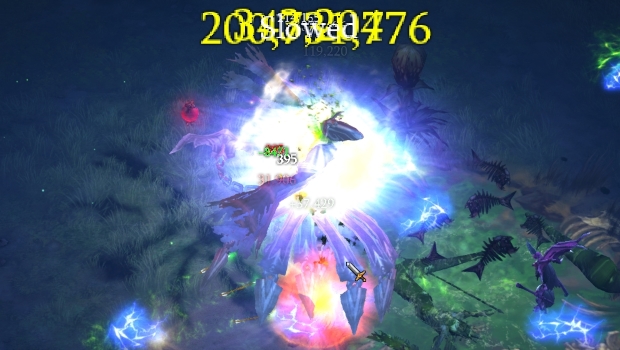 An example: my current CHC is low at 27.70% (or my CHD is too high), because my CHD is 207.00%, or about 7 times my chance. The green gem I have socketed into my weapon is a huge source of critical hit damage — a whopping +125.00%. My problem is largely because I want to socket a needed legendary gem, but my current amulet with a socket is otherwise inferior in stat allocation because it doesn’t have my preferred trifecta with some juicy CHC.
An example: my current CHC is low at 27.70% (or my CHD is too high), because my CHD is 207.00%, or about 7 times my chance. The green gem I have socketed into my weapon is a huge source of critical hit damage — a whopping +125.00%. My problem is largely because I want to socket a needed legendary gem, but my current amulet with a socket is otherwise inferior in stat allocation because it doesn’t have my preferred trifecta with some juicy CHC.
A trifecta is the perfect set of three stats sought out for on a piece of gear, with the extra stat usually being the primary stat for your class (Strength, Dexterity, or Intellect) or a guaranteed item stat like bonus weapon damage. Often you’ll see trifectas composed of CHC, CHD, and then another stat we’ve already mentioned, like IAS, ele %, CDR, or RCR.
Movement speed helps you defensively so you can move out of floor fire and bad missiles more quickly. It helps you offensively as well, because you can keep up buffs that depend on hitting mobs while you are moving more continuously, mob pack to mob pack, with less downtime in between. It also helps you in pure time efficiency because you can travel across the map more quickly.
Movement speed (move %) is often mentioned only once or not mentioned at all in skill build guides, because it’s often assumed you’re working to maximize it. The tooltip spells it out: The maximum movement speed increase you can have from gear and Paragon points is 25.00%. You can get all 25.00% from devoting 50 of your Core-category Paragon points into movement speed, but that assumes you have accrued at least 197 Paragon levels (50 + 49 + 49 + 49). Usually, you get this stat from your boots, and then you fill the remaining difference from 25% with Paragon points.
 Survival of the fittest
Survival of the fittestDishing out the damage is what most players will focus on, but surviving the damage done by monsters is just as important — especially when playing hardcore or solo! I should be discussing ten important gear stats in Diablo 3, not nine, but that tenth item isn’t just one stat. Defensive abilities, armor, resistances, vitality, percent life, and the three Life-per stats all factor into being able to take hits or heal back hits. So we’ll talk later in more detail on the myriad ways to survive adventuring in Hell.
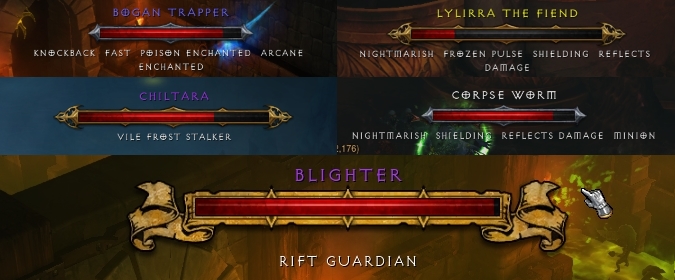
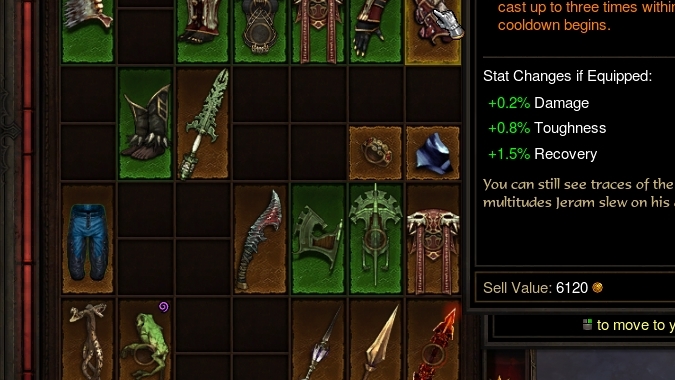
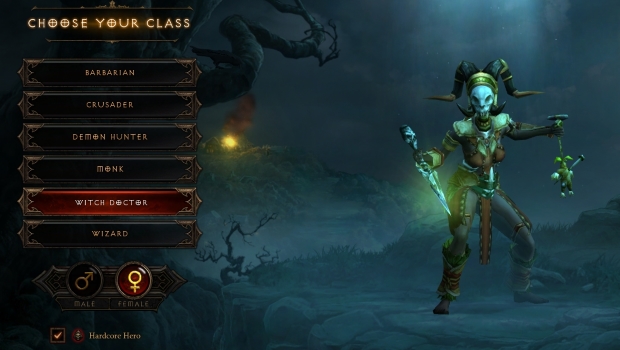
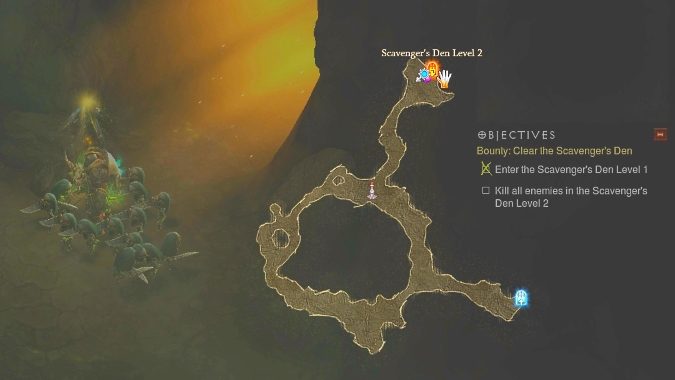
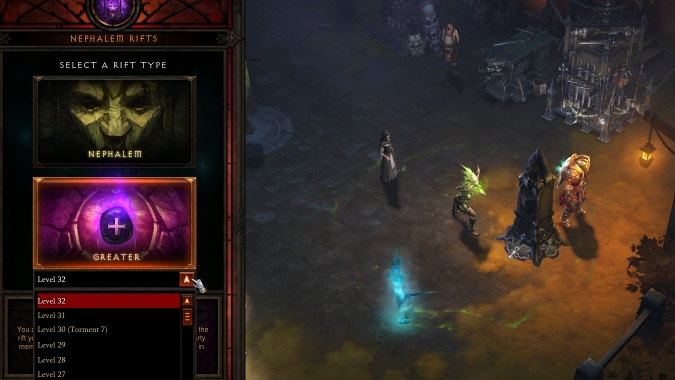 Favorite legendary gems in Diablo 3's Season 4
Favorite legendary gems in Diablo 3's Season 4 Know Your Lore: The Burning Hells
Know Your Lore: The Burning Hells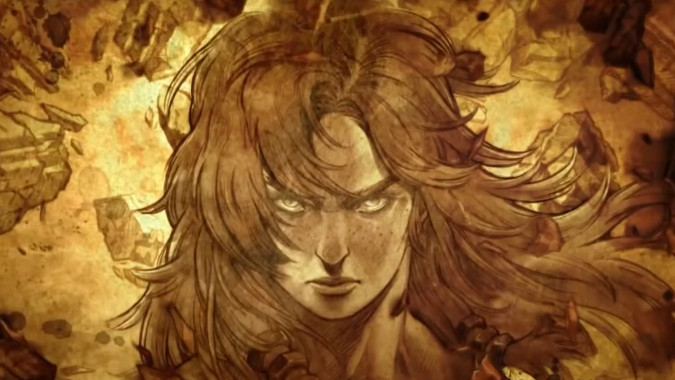 Know Your Lore: Speculation and the future of Diablo 3
Know Your Lore: Speculation and the future of Diablo 3 9 important Diablo 3 gear stats
9 important Diablo 3 gear stats Know Your Lore: Sanctuary
Know Your Lore: Sanctuary